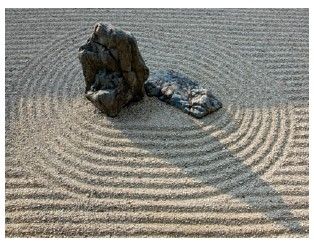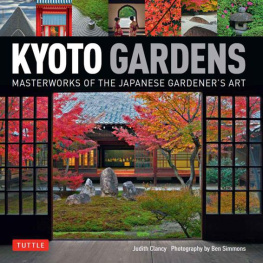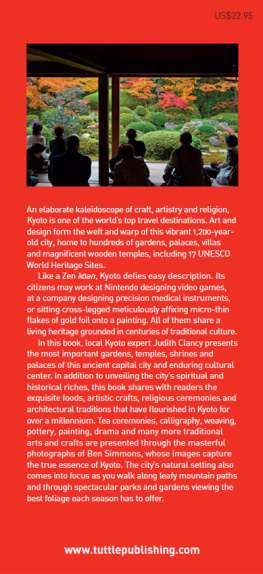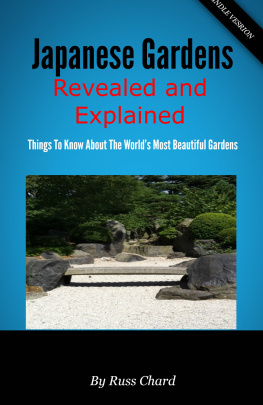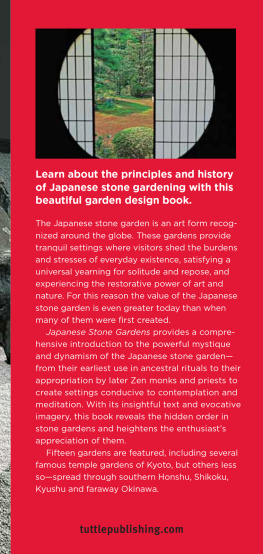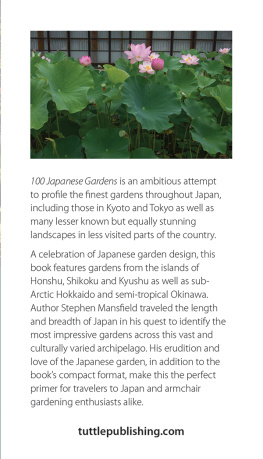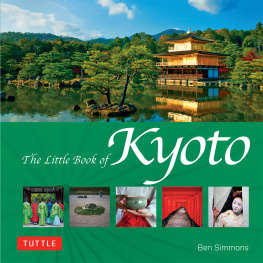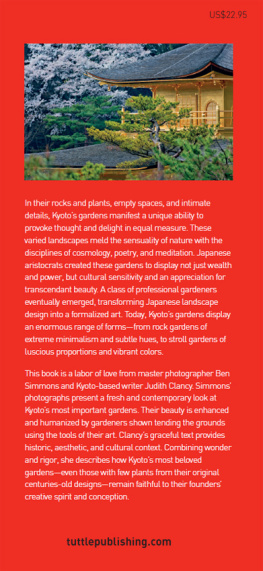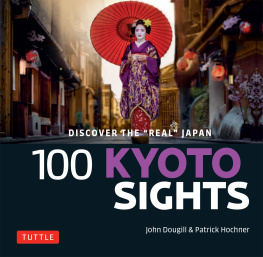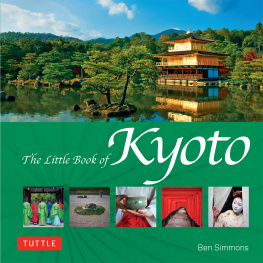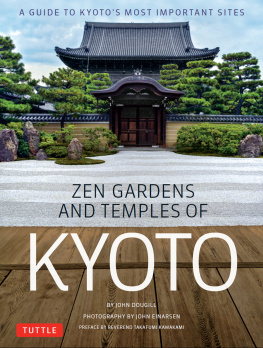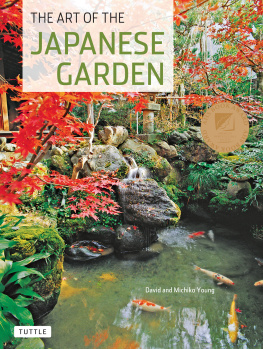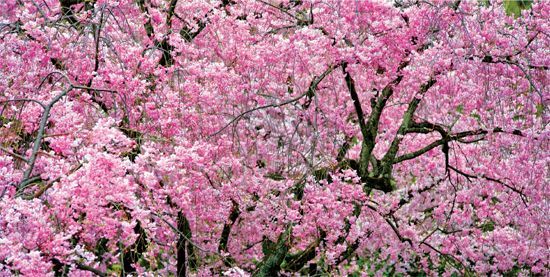
The fleeting embace of hanging cherry blossoms in Heian Jingu Shrine garden.
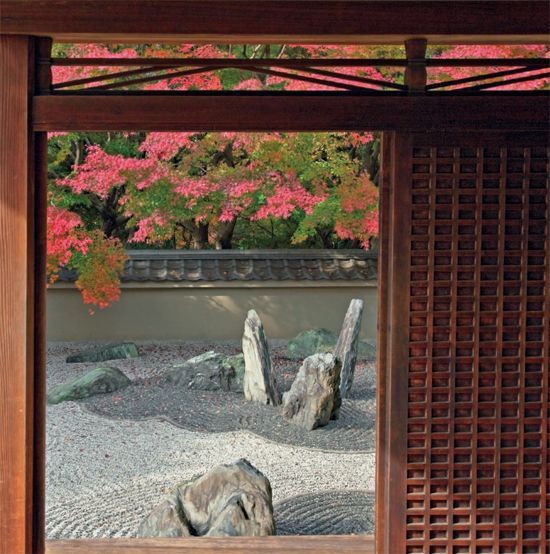
A dragon emerges from a cloud at the Mirei Shigemori garden at Ryogin-an.
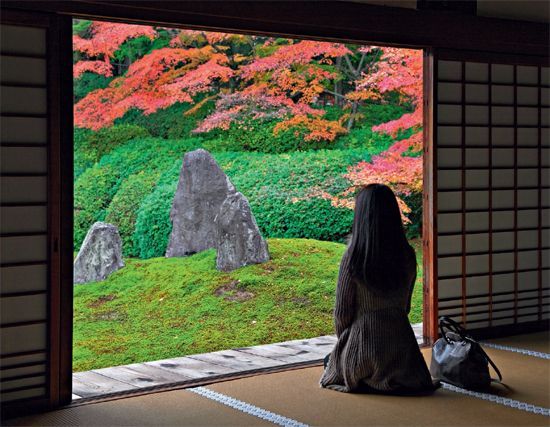
A garden whispers to those who listen at Komyo-in, a subtemple of Tofuku-ji.
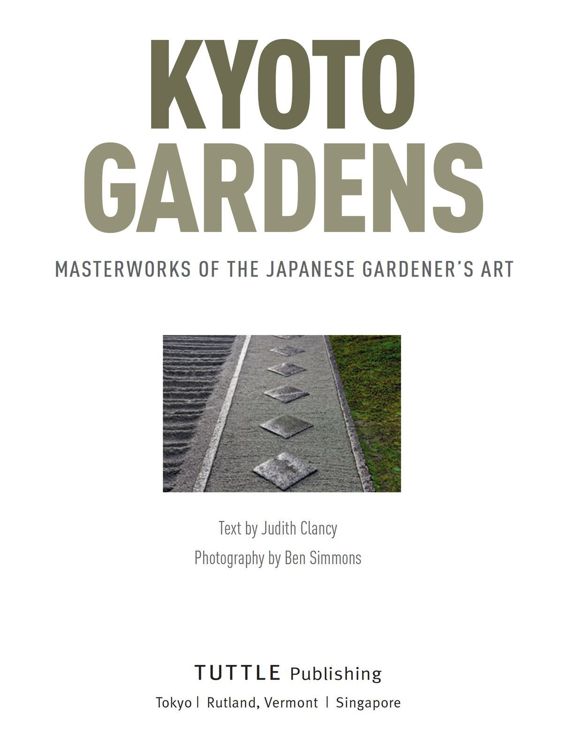
CONTENTS
Introduction
CHAPTER 1
CHAPTER 2
CHAPTER 3
CHAPTER 4
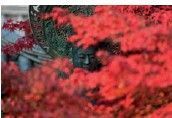
Autumns signature color.
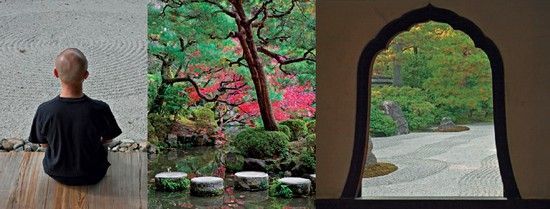
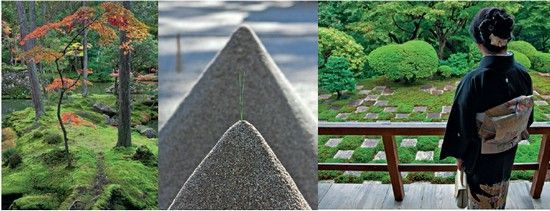
The universe at ones feet. Dragon-tail steppingstones in Heian Jingu Shrine. A graceful, cusped window frames a view. A slender maple brings a touch of color to the Moss Garden. Cone-shaped mounds of sand at Kamigamo Shrine. The captivating blend of symmetry and asymmetry.
reshaping the land
Long ago, the shadow of a large pterosaur swept across a prehistoric land. Buffered by air currents, the winged predator surveyed the wave-trimmed coastlines and peaked ridges.
Today, it is the undulating shadow of an airplane that skims the same glistening peaks and white sand coasts. Forests of houses and factories have displaced dense woodlands, and rivers of asphalt cross ancient streams.
The Japanese archipelago stretches from the temperate island of Hokkaido with its long, snowy winters to the semitropical coral reef islands in the Okinawan chain. The country ranges from 45 to 26 degrees latitude, the distance from Milan to Dubai, from Montreal to Miami.
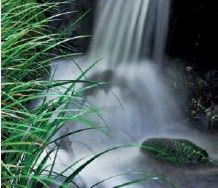
Grasses glisten with waterfall spray at Sambo-in.
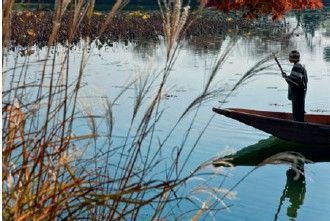
Wild yet containeda boat glides past a thicket of pampas grass on Osawa Pond.
Once part of the Asian land-mass, the island chain of Japan broke away from the continent and is now separated from it by the Sea of Japan. The heaving tectonic plates and volcanic activity created steeply corrugated mountains, narrow valleys, volcanoes, and shallow rivers. Even today, wisps of sulfurous steam escape from fissures beneath which smoldering magma resonates with a low rumble. With its abundance of hot springs and its fifty active volcanoes, Japan is an integral part of the Pacific Rim of Fire.
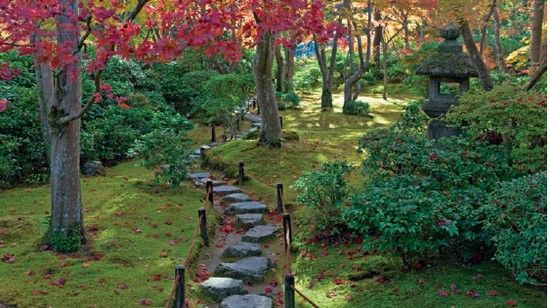
A path to ageless beauty at Okochi Sanso in Arashiyama.
The main land massesHokkaido, Honshu, Shikoku, and Kyushualong with hundreds of smaller islands strung along the archipelago, give Japan one of the worlds longest coastlines.
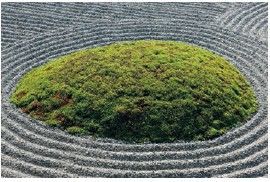
Textured, layered, yet groundedthe world of Zen.
The abundance of fertile land and variety of climates host a rich diversity of trees: pine, cedar, cypress, beech, juniper, yew, paulownia, cryptomeria, elm, magnolia, mountain cherry, camphor, mountain azalea, maple, oak, ilex, hackberry, chinquapin, andromeda, ash, and walnut. They in turn nurture a bounty of birds from continental China and beyond.
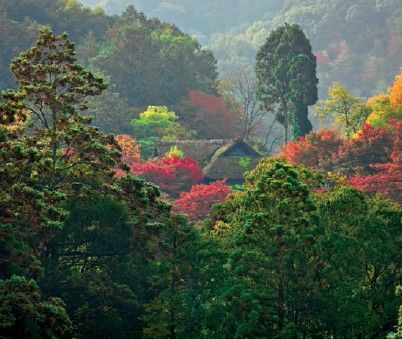
The sumptuous fall foliage of Kyotos northeastern mountains.
Wet-field rice cultivation began around 300 A.D. in Kyushu, spread quickly northward, and structured the land into manageable shapes for agriculture. Farmers sculpted the gentler slopes into small plots and built an elaborate canal system to irrigate the crops.
Set on the island of Honshu, in a wide basin in the middle of the archipelago, is the ancient capital of Kyoto. Sheltered on three sides by mountains, the city is wrapped in a hazy mist that promotes luxuriant floral growth and carpets the land in moss, fern, and bamboo grasses. Over mountain passes to the north lies the Sea of Japan, while the plain in the south extends to Osaka and the Inland Sea, and farther on, to the Pacific Ocean.
The high humidity also provides an ideal environment for producing silk with the flexibility needed for spinning and weaving its delicate strands. Silk is no longer produced in Kyoto, but the thousand-year-old tradition of sericulture is revealed in remnants of the mulberry bushesa vital nutrient for silkwormsthat have been unearthed on the plain of Kameoka, west of the city.
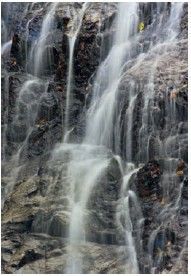
Cascading Otonashi Falls in Ohara.
The Hata clan is believed to have brought silk from the Korean Peninsula when it established itself in the 4th century in the western part of what would become Kyoto. The forested basin was rich in game. Deer, bear, serow, wolves, fox, wild boar, hare, and monkeys roamed the land. The sky was dotted with cranes, ducks, egrets, and a variety of migrating birds.
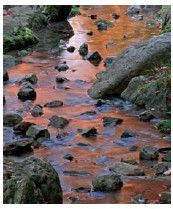
Maple leaves captured by a stream.
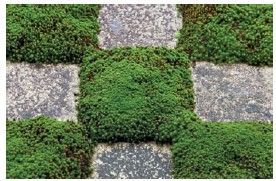
The principles of yin/yang at playgarden in Tofuku-ji.
By the 8th century, several capitals had been established, with one of the earliest in the fertile land around Lake Biwa. In 710, the city of Nara, just south of the lake, became the first permanent capital, with an imperial court patterned on Chinas. For centuries, the court adhered to the political and social dictates of Confucian cosmology, until gradually, an indigenous system evolved. A new religion, Buddhism, was also imported from China to Japan, along with carpenters to apply their superior building techniques to large temple complexes. The massive construction projects imposed a new shape on the land by forming wall-enclosed courtyards and elaborate structures to house sacred images. The tools and techniques were modified to build private estates for the nobles.
